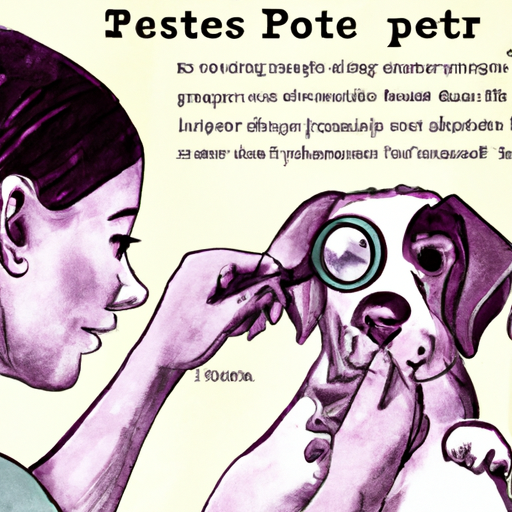Introduction
Hello there, caring pet parent. Just like you, I believe that dogs are more than just pets—they are family. And so, their health and comfort matters as much as any other family member’s. That’s why today, we’ll delve deep into an often overlooked health issue that can plague our canine friends: nasal mites. You might be surprised to learn how common these microscopic pests are, and how they can affect your beloved canine companion. But fret not, by the end of this comprehensive guide, you’ll know exactly how to identify, treat, and prevent nasal mites in dogs.
1. Understanding Nasal Mites
Nasal mites, scientifically known as Pneumonyssoides caninum, are tiny parasites that live in the nasal passages and sinuses of dogs. They are not common in all regions, but when present, they can cause a range of uncomfortable symptoms for your dog.
Symptoms
The following are some signs that your dog might have nasal mites:
- Chronic sneezing
- Nasal discharge
- Nosebleeds
- Frequent pawing at the nose
- Breathing difficulties
If you notice any of these symptoms, it’s essential to consult your vet immediately.
2. Diagnosing Nasal Mites
Veterinary Examination
A diagnosis of nasal mites is typically confirmed by a veterinarian. The vet may use a rhinoscopy, a procedure where a small camera is inserted into the dog’s nasal passages. This allows the vet to visualize the mites and assess the extent of the infestation.
Laboratory Tests
Sometimes, a vet may also take a nasal swab to examine under a microscope or send for laboratory analysis.
| Method | Procedure | Purpose |
|---|---|---|
| Rhinoscopy | Insertion of small camera into the nasal passages | Visualization of mites |
| Nasal Swab | Collection of sample from nasal passages | Microscopic examination and laboratory analysis |
3. Treating Nasal Mites
Medication
Once a diagnosis is confirmed, treatment can begin. The most common treatment for nasal mites is a series of medications to kill the mites and alleviate symptoms. Some commonly used medications include:
- Ivermectin
- Milbemycin
- Selamectin
It’s crucial to follow your vet’s instructions for these medications to ensure they’re effective.
Follow-Up Care
After treatment, your vet will likely schedule follow-up appointments to monitor your dog’s progress and ensure the mites have been eradicated.
4. Preventing Nasal Mites
Prevention is always better than cure. To prevent nasal mites, consider the following:
- Regular vet check-ups: Regular vet visits can help detect nasal mites early.
- Clean environment: Keeping your dog’s environment clean can reduce the risk of nasal mites.
- No nose-to-nose contact: Nasal mites can be transmitted from one dog to another through nose-to-nose contact. Limiting this can help prevent infestation.
5. FAQ
1. Can humans get nasal mites from dogs?
No, nasal mites are generally specific to dogs and cannot infest humans.
2. Are nasal mites visible to the naked eye?
No, nasal mites are microscopic and cannot be seen without the aid of a microscope.
3. Can nasal mites be fatal to dogs?
While severe infestations can cause discomfort and distress, nasal mites are rarely fatal.
4. How long does it take to treat nasal mites?
The treatment duration can vary depending on the severity of the infestation, but most treatments last between 1 to 2 months.
5. Can all dogs get nasal mites?
Yes, all dogs are susceptible to nasal mites, but some breeds with long noses are more susceptible.
Conclusion
Caring for a dog is a rewarding experience, but it also comes with its challenges, such as dealing with health issues like nasal mites. However, with the right knowledge and resources, you can ensure your furry friend stays healthy and happy. Remember, when in doubt, always consult a trusted vet—because our dogs deserve the best care we can give them.



